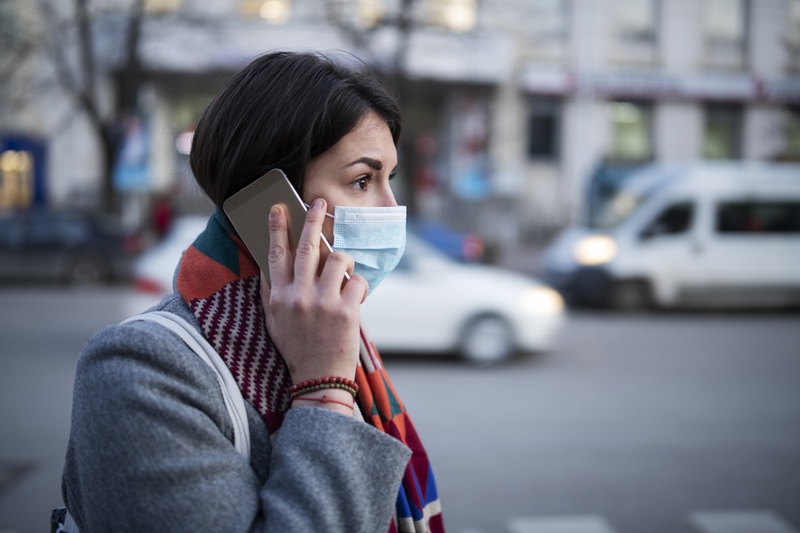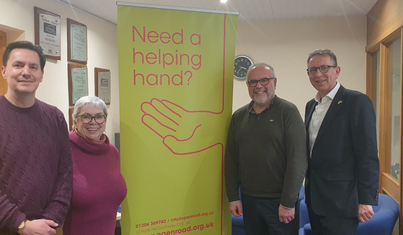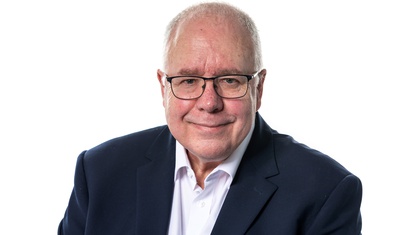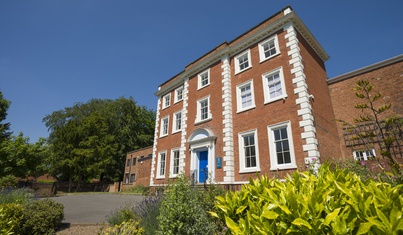On 8 July 2020, the government announced that it would introduce a temporary 5% reduced rate of VAT for certain supplies of hospitality, hotel and holiday accommodation and admissions to certain attractions.
This cut in the VAT rate from the standard rate of 20% will be effective from 15 July 2020 to 12 January 2021.
These changes are being brought in as an urgent response to the coronavirus pandemic to support businesses severely affected by forced closures and social distancing measures and to protect jobs.
The supplies that will benefit from the temporary 5% reduced rate of VAT include:
- food and non-alcoholic beverages sold for on-premises consumption, for example, in restaurants, cafes and pubs
- hot takeaway food and hot takeaway beverages (excluding hot alcoholic drinks such as mulled wine and similar)
- sleeping accommodation in hotels or similar establishments, holiday accommodation, pitch fees for caravans and tents, and associated facilities
- admissions to the following attractions that are not already eligible for the cultural VAT exemption
** It is important to note that it is not mandatory to pass on the effective ‘VAT saving’ to customers. This is entirely a commercial decision for business operators, and whether or not prices and rates are to be adjusted is for each business to decide taking into account their own trading terms and conditions.
** HMRC have also now announced changes to the VAT Flat Rate Scheme for these sectors as well, with significant reductions to the percentages (see below).
Hotels and holiday accommodation
The reduced rate VAT measure will affect the following supplies:
- provision of sleeping accommodation in:
- hotels
- inns
- boarding houses and similar establishments
- grant of a license to occupy holiday accommodation and charges for:
- seasonal pitches for caravans - including supplies of facilities provided in relation to the occupation of the pitches
- pitches for tents and camping facilities
Q. What about deposits received in advance?
A. Where a deposit is taken for a stay between 15th July 2020 and 12th January 2021 then the 5% reduced rate can apply. If a deposit is taken for a stay after 12th January 2021, then it is possible to treat the supply as subject to the 5% reduced rate under the special change of rate provisions (Notice 700, Para 30.7.2 - 30.7.4)
Q. What about invoices already issued?
A. Where a VAT inclusive invoice has been issued which does not show a separate amount of VAT, a credit note can be issued along with a revised invoice showing the revised price (if relevant) and change in VAT rate. If a customer queries the price, perhaps in respect of the VAT rate reduction without a reduction to the overall price, this relates to the commercial decision on pricing as mentioned above
However, if a full VAT invoice has been issued showing the net price, VAT rate and the amount of VAT, a credit note would have to be accompanied by a refund of the 15% VAT difference to prevent unjust enrichment as the customer has borne the cost of the VAT (VAT Notice 700/45, section 9)
Q. What about current bookings and stays that overlap the VAT rate change?
A. The business has the option of either leaving the VAT position unchanged and account for VAT at the standard rate (20%), or apportioning the VAT due based on the number of days from 15th July 2020 onwards
Q. What about wedding receptions or room hire charges?
A. If a room is hired for the purposes of catering, then the reduced rate can apply. However, in respect of wedding packages care needs to be taken as to whether this is viewed as a single supply with one VAT rate or multiple supplies with independent VAT rates, as HMRC have indicated that wedding packages remain standard rate
Q. What about small businesses using the Flat Rate Scheme?
A. See below
Catering and take-away food
The reduced rate VAT measure will affect the following supplies:
- hot and cold food for consumption on the premises on which they are supplied
- hot and cold non-alcoholic beverages for consumption on the premises on which they are supplied
- hot takeaway food for consumption off the premises on which they are supplied
- hot takeaway non-alcoholic beverages for consumption off the premises on which they are supplied
However, any supplies of food and drink that are supplied as part of a supply of catering services for consumption off-premises remain standard rated.
From the above the reduced rate will apply to ANY food and non-alcoholic drink consumed on premises. It will also apply to HOT takeaway food and HOT takeaway beverage (excluding alcohol) for consumption off premises.
- The reduced rate does not cover ANY alcoholic beverage
- The reduced rate does not cover ANY cold takeaway beverage such as bottles of water, cans of soft drink, etc.
- The reduced rate does not cover supplies of catering for events, parties, etc. held off premises
Remember that some cold takeaway food products (e.g. sandwiches, salads) may already be covered by the zero rate provisions.
Looking at some example transactions:
- where a family dines in a restaurant and orders a mix of alcoholic and soft drinks, the food and soft drink will have 5% VAT applied, the alcohol will have 20% VAT applied
- where a person has a breakfast with tea in a café, then buys a sandwich, crisps and soft drink to take away for lunch – the breakfast/tea would have 5% VAT applied, the sandwich would be zero rate (0%) and the crisps and drink would each have 20% VAT applied
A till with the appropriate EPOS functions or good record keeping will be essential to ensure VAT is declared correctly.
Another point to remember is that this temporary reduction in VAT and schemes such as ‘Eat out to Help out’ are likely to be audited by Government/HMRC, providing them with additional information about your business, such as turnover levels and the split between eat-in and takeaway.
Many restaurant businesses have agreed apportionment methods with HMRC, often based on historic data. It remains to be seen if HMRC will use the data and information obtained as part of these incentive programmes to review VAT accounting methods currently used by restaurants.
Q. What about small businesses using the Flat Rate Scheme?
A. See below
Admission charges to attractions
This applies to businesses that make supplies of admissions that are currently taxable at the standard rate. This includes:
- Shows / theatres / circuses / fairs / amusement parks / concerts / museums / zoos / cinemas / exhibitions / similar cultural events and facilities
- Planetariums / botanical gardens / studio tours / factory tours
It does not include any supplies that are exempt under the Cultural Exemption (VATA1994, Sch.9, Grp.13).
The temporary reduced rate does not apply to admission to sporting events.
This temporary reduced rate only applies to admission fees. However, where goods are part of the admission fee and are incidental to the main supply, the whole supply is eligible for the temporary reduced rate. For example, where the price of admission includes an incidental supply of a brochure or activity book, this would be a single reduced rate supply.
Whether there is a single supply with one VAT prevailing rate, or whether there are multiple supplies each with their own distinctive VAT rate, can be a complex area. If in doubt, speak to an adviser.
Q. What about annual passes?
A. It is unclear at this stage whether there will be an ability to apportion the VAT based on the period of time covered by the reduced rate.
Flat Rate Scheme
The VAT Flat Rate Scheme (FRS) is designed to assist micro business with simplified VAT accounting. Normally a business accounts for output tax shown on sales invoices and claims VAT on purchase invoices. With the FRS small businesses simply apply a set percentage to their gross sales figure (VAT inclusive). The percentage used is determined by HMRC on a sector by sector approach.
To be eligible to join the FRS, a business must have a VAT exclusive annual turnover of £150,000 or less. But once in the scheme, a business can have increased annual turnover up to £230,000 including VAT before having to leave.
HMRC have now released the amended VAT flat rate scheme percentages to be used during the period covered by the reduced rate (15.07.20 to 12.01.21):
Pubs – FRS percentage will be down to 1% (from 6.5%)
Hotels & accommodation – FRS percentage will be down to 0% (from 10.5%)
Restaurants & takeaways – FRS percentage will be down to 4.5% (from 12.5%)
These substantive reductions in the FRS percentages can equate to significant VAT savings for small businesses.
Example 1 – Hotel / accommodation
Based on a VAT inclusive annual turnover of £200,000, a hotel using the FRS would pay £21,000 VAT to HMRC. In the six month period covered by the reduced rate, that hotel will pay no VAT (0%) – a saving of £10,500.
Example 2 – Restaurant / takeaway
Based on a VAT inclusive annual turnover of £200,000, a restaurant using the FRS would pay £25,000 VAT to HMRC. In the six month period covered by the reduced rate, that restaurant will only pay £4,500 VAT (4.5%) – a saving of £8,000.
THESE ARE VERY GENEROUS FRS PERCENTAGES THAT RESULT IN GREATLY REDUCED OR NO VAT BEING ACCOUNTABLE TO HMRC DURING THE SIX MONTH PERIOD.
It is important to remember that once you leave the FRS, you cannot re-join for at least 12 months!
If any of the above requires further explanation or if you have any further questions please contact us.



